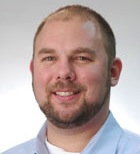Welcome to the forums at seaphages.org. Please feel free to ask any questions related to the SEA-PHAGES program. Any logged-in user may post new topics and reply to existing topics. If you'd like to see a new forum created, please contact us using our form or email us at info@seaphages.org.
Recent Activity
Debbie Jacobs-Sera posted in Validating Translational Frameshifts in DNA Master
storksle posted in Validating Translational Frameshifts in DNA Master
Debbie Jacobs-Sera posted in Validating Translational Frameshifts in DNA Master
Lee Hughes posted in Validating Translational Frameshifts in DNA Master
storksle posted in Validating Translational Frameshifts in DNA Master
No frameshift in cluster BK1?
| Link to this post | posted 18 Mar, 2021 03:09 | |
|---|---|
|
|
Just to add from the perspective of a BE1 phage (looking at Cross, which we annotated last semester), the CCCGGAA that lines up with the CCCAAAT in the BK1 examples is preceded by a stop codon in the potential second reading frame (and looks to be that way in the majority of the BE1 examples in Chris's chart), so that is exactly the longest position where a frameshift could take place between those two reading frames in those phages. That's interesting (whether or not it really means anything). Lee |
| Link to this post | posted 18 Mar, 2021 16:49 | |
|---|---|
|
|
1st: Yup, stop codons are a no go as far as I am concerned. I was just looking at conservation in the MSA which is why I mentioned backing up; but you are correct, I would not think it a good gene model to add in "stop codon read through" (I know these do exist in eukaryotes do they even exist in Prok's?) 2nd: I am fine if Joyce or anyone else wants to include this data in a poster. Its kind of a pain to create all those DNA sequences if you don't have Starterator running in a VM so I am happy to send anyone the sequences or the alignment for any pham, just send me an email. As I said above, I think the only evidence that could be relatively easily collected that would help me make up my mind is to get a sense of how often the slippery sequence changes in other phams, if we NEVER see it change in other phams then that would make me pause here on the side of caution and stick with the "least worst" model. On the other hand if we do see it happening in other phams then I could see calling it here too. So just like in all my wet bench experiments: if you are not sure of your conclusions: run another experiment. |
| Link to this post | posted 18 Mar, 2021 17:20 | |
|---|---|
|
|
So to simplify/clarify, we will call the tail assembly chaperone and the above described slippage in the BKs. (I will get the genomes in GenBank updated soon.) We will call the BE genes as tail assembly chaperones, but will not include the slippage because it is not clear how to record that. Chris and Lee - Thank you for your input on this! A lovely demonstration on how the alliance works. Joyce, no worries about your poster. Change as you see fit. Does your title still fit? Because of the early dates for the symposium, we are all works in progress and this is such a nice story. Please mention how the forum informed. Very nice! |
| Link to this post | posted 18 Mar, 2021 18:54 | |
|---|---|
|
|
What excellent timing. Steve |
| Link to this post | posted 19 Mar, 2021 16:43 | |
|---|---|
|
|
I am still not convinced it is not one amino acid back (i.e. the slip is D/P instead of K/P). Supporting the former is base conservation, supporting the latter is the "observed pattern" for many slippery sequences. I know of no evidence to tell me which is more informative in this situation. I will certainly say that either annotation has enough support that it will qualify as "less worse" than going with the up til now policy of "annotate T as a separate gene and pick the Longest orf". So we have several BK1 and will annotate using the CCCAAAT pattern accordingly. |
| Link to this post | posted 19 Mar, 2021 16:52 | |
|---|---|
|
|
Thanks all, for the discussion! I walked through this with my students in class yesterday, having them think first about why the programmed translational frameshift wasn't called in any of the cluster members, and then coming up with the evidence that we'd need to annotate the frameshift. Then each group examined part of the evidence (we didn't have time for everyone to do all of it), and we came back together to discuss. They were pretty convinced about the CCCAAAT pattern. Then I showed them the forum discussion, and Chris's comment got posted as they looked at it, which was super cool. I thought it was a great example of how science is done, and the students were really excited to be part of it. I'll email you, Chris, to get the sequences/alignment. Thanks again! |



